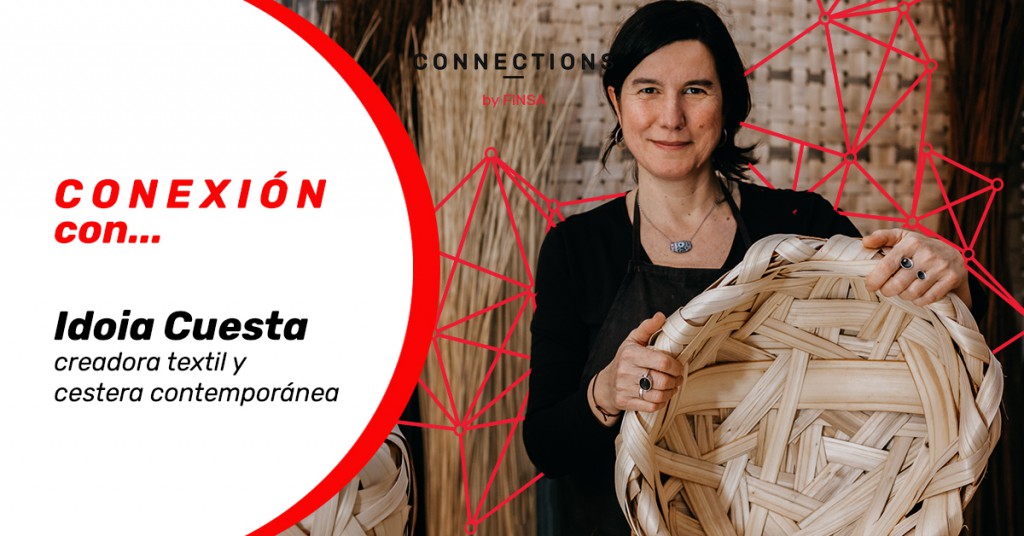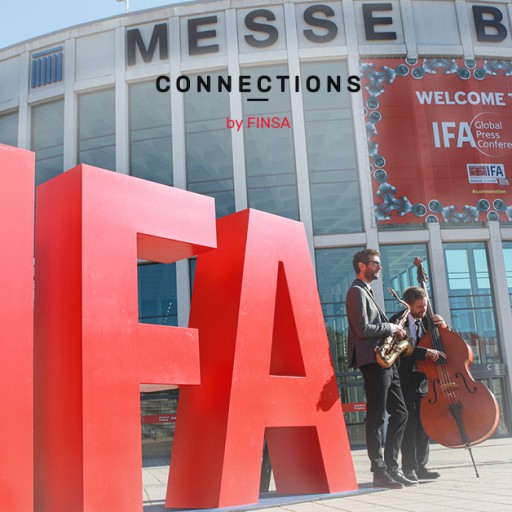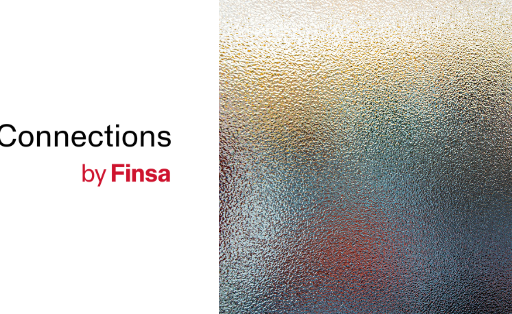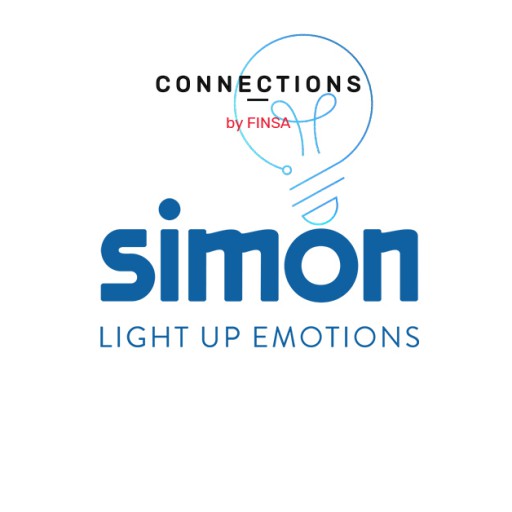Idoia Cuesta was born in Donostia in 1969 but has been living on the banks of the Miño river for many years in the bucolic Outeiro de Rei in Lugo. When she speaks about her work, she uses one particular word over and over: play. That’s because researching and modernising ancient techniques, adapting them and bringing them into the twenty-first century, is perhaps what she most enjoys about her work as a modern artisan.
Her curiosity, her love of nature, and her work ethic have led her to experiment with different techniques, to successfully combine basketweaving and textiles and, along the way, to discover materials that satisfy her creative urges, in addition to collaborating with big companies and other well-known professionals. Her panel of chestnut veneer welcomes customers at the Zara Home flagship store in A Coruña; she weaves bags and vases out of braided leather for Loewe; the Adolfo Domínguez store in Ourense features one of her vine-like installations on the ceiling, and her wicker corsets for fashion house Maya Hansen are an absolute dream.
When Idoia Cuesta touches a strand of wool, of jute, of hemp, of recycled plastic, of fabric, of anything at all, magic happens. It’s no wonder that she won the National C Artisanry Prize in 2014 and the Galician Artisanry Prize in 2021.
For this CONNECTION WITH…, we spoke to Cuesta and got to know her and her work a little better.

You often say that basketweaving is more than just making baskets. What does it mean to you?
For me, basketweaving is being able to work with fibres that nature gifts us and, more than that, to innovate by working with other types of materials: being able to apply the techniques of basketweaving to other materials.
You studied Marine Zoology. Does any part of Idoia Cuesta the biologist remain inside Idoia Cuesta the basketweaver?
I think that, in the end, anything that we study over the course of our lives remains with us, it leaves its mark. In fact, I wanted to study Fine Arts, but I was not allowed, and so I chose Biology, and I don’t regret that at all. But I believe that my education helped me understand everything about plant fibres and the lifecycles of plants. So yes, something about the study of biology, of ecosystems, of zoology, has remained. In the end, nature is always present in my work, in organic forms, and I use it in my collections.
The ocean has a huge presence in my latest work, Abisal. The pieces seem like living beings, like jellyfish or anemones. You just want to reach out and touch them. The collection is also what won me the Galician Artisanry Prize in 2021.
I live in Lugo, on the banks of the Miño river, in the middle of the Biosphere Reserve, a marvellous place, a stunning place, with a riverside woodland, and there’s water nearby, but it’s true that the ocean is what I miss the most. It’s always fascinated me, and I always spend summers on the Lugo coast, where I can have more contact with it.
Ver esta publicación en Instagram
You found the material that you used to create Abisal in a bait and tackle shop.
Yes, I came upon it by chance. It’s a type of fishing line, a kind of nylon that is used in traditional fishing, and it was just like a game. I knew I had to weave something using this material and the result was these organic marine shapes that looked like anemones, like actinias from the depths of the ocean. There’s a bit of sea life inspiration there. Because the material is transparent, translucid, they also interact with the light, which has fascinated me since I first started making prototypes for these pieces. Depending on how they are lit up, on how the sunlight or even a spotlight hits them, they create shadows, change colour…It was wonderful to discover the impact of light and how it transformed the piece. Because it’s actually a basket, but it has this double use, as a basket and, when it’s well-lit, it can turn into something else that’s filled with light.
Ver esta publicación en Instagram
The Homo Faber Guide, i.e., the platform for the best artisans in Europe, has recognised your work. Do you see yourself as a neo-artisan?
Well, I don’t know if I’m all that ‘neo’, but in the end this European guide recognises the trades, mastery, knowing how to do something traditional and bringing it into the modern era. That kind of acknowledgment is great for showing people the value that traditional trades have.
Do you believe technology and artisanry are compatible, or are they two worlds moving in parallel that never collide?
I believe they are compatible. The thing is artisanry has always been something that was done with the hands, and now we use new technology to help us [create]. We often use 3D models even when we are designing prototypes. Technology exists, it’s there to be used and to be combined with artisanship.
What do you believe are the pillars of your work?
The foundation of my work, what motivates me every day, is [the way I am] always researching, always looking for new materials, or challenges such as collaborations with other companies or teams working in the design, architecture, or interior design worlds. That’s what motivates me to keep creating and always be looking for new things or to be able to apply my knowledge to new projects. Another thing that motivates me quite a bit is being able to educate others, to keep passing on this trade. These are the two main pillars that support my work: on one hand, there’s educating others and, on the other, continuing to collaborate and work with brands and on new projects.
Is to create to play and experiment?
It’s all that and more because, in the end, creating can be complicated. When you’ve got a specific project or a commission, there are some limits, and you have to work within them. Creating something from scratch and producing something new is much more complicated and requires a huge amount of work. As I often say, inspiration comes when you are up to your eyeballs in work and you say, “well, now I could do something else with this” and, in the end, that’s where ideas come from. You have to stay curious all day, always searching for something new.
Ver esta publicación en Instagram
Has the concept of beauty changed in the last few years? Are we seeing beauty with new eyes?
I think so. In the wake of the pandemic, we have started to place more value on beautiful things. After spending so much time at home, everyone values high-quality materials, pieces that make our lives a little more pleasant. That’s where artisanry has a lot more to say and to offer, because that’s kind of what it does: it creates pieces that have soul, pieces that are almost unique.
What inspires you?
Well, the truth is that, since I live amongst nature, my first source of inspiration is nature itself, it’s what inspires me every day. But then when I travel, when I’m in a city, I always go to exhibitions because I think it’s fascinating to see what others are doing and the new design trends. I believe that inspiration is everywhere, even in window displays. You often just have to be alert; you never know where it’s going to come from. But yes, it’s that: where I live, which is very natural, and when I’m in the city, I also look for inspiration there. For example, when I was in Paris at the Maison&Objet fair, I saw new trends, the directions in which brands are headed, just while I was walking around. Then of course there is social media, which is like a window onto the world.
Ver esta publicación en Instagram
And something that you use quite a lot.
Yes, to open up, to share, to show who I am, to interact [with others].
Fusion, blending, hybridisation. Are these some of the defining traits of your identity as a creator?
Yes, actually. I am always trying to merge both textile and basketweaving techniques, even knot-tying, like macramé and crochet. I also use these techniques when working with natural, recycled, and newer materials. It’s always about looking for things that I can fuse together. Yes, that’s the word.
Do you like to connect things, time periods, cultures, and people through your work?
Yes. In the end all the inspiration, all the ancient knowledge of the basketweaving trade, are universal techniques. I studied in Galicia, I have all that traditional culture behind me, and then I bring those techniques into other fields or use the in a different way. But that traditional knowledge is always there. I’m always learning new techniques. I like to learn something new every day, to keep training.
What is your creation process like? What’s your favourite part?
I have two paths, two creative processes. When I’m working on a commission or a prototype for a specific piece, I look for the best material and technique to work with; I look at what it can offer. The other path I take is going backwards: I find myself with a different material in my hands and I ask myself “what can I do with this?”, or I think about how I can weave it, how I can give shape to it, how I can build something with it, what it can be used for. It’s like playing around and seeing what comes up. I would say that one of these processes is more closed and the other is freer, more open. I enjoy both of them. But they are difficult. When you have a commission, there is additional effort because you have to reach a successful conclusion, although it’s also true that sometimes, when I work with designers and there is a connection, an exchange of ideas, that is the most interesting part of the creative process, when there is that dialogue, that growth. The other process is starting from scratch, it’s freer and it always results in something interesting.
Ver esta publicación en Instagram
Are the two processes equally enriching?
Yes, yes, and exhausting too (laughs). The creative effort behind an object or a piece is not often valued. But getting to that point is complicated.
Do you have a favourite material, one that is more special than the others?
I always worked with felted wool in my previous collections, it was my favourite. But now with all the shipping problems, with being able to access raw materials, which is becoming quite difficult, I’ve gone back to working with plant fibres, something that’s more local that I can get from the Iberian Peninsula, that I don’t have to import. That’s why I’ve gone back to working with wicker, a natural fibre par excellence when it comes to basketweaving, and chestnut veneer, which is allowing me to create a more, shall we say, ‘native’ collection.
Ver esta publicación en Instagram
Wicker, wool, chestnut, nylon…so much contrast. You certainly don’t discriminate. What makes you choose one over the other?
The material determines the technique that you are going to use when weaving, but I don’t limit myself. With Loewe, for example, a company I’ve been working with for a long time, I work with leather, and weaving it presents new challenges: in sheets, in strips, in ropes…In the end, different materials transmit different things, they each produce different sensations when you’re working with them, and they result in different objects. But that’s the challenge, having different materials and finding out which technique you can use to weave them.
Ver esta publicación en Instagram
You speak about objetotesoros (‘objecttreasures’). What do you mean, exactly?
I have this piece that I inherited from my grandfather. My grandfather died before I knew that he used to make baskets. So, when I found myself in possession of this tool that he used to make them, it was like finding his legacy. Now I keep it with me. It’s a rattan splitter made from hazelnut wood. It belonged to him, and I inherited it. It is an objetotesoro that I like, that motivates me, and that gives me that sense of having inherited traditional trades.
Do you use it?
Yes, yes. I made a more modern one because I treat my grandfather’s one like a treasured object, but yes, I have it.
You have collaborated with well-known brands and other professionals. Is this the new way of working?
Yes because, as I said at the beginning, I believe that basketweaving is not just about making baskets; the techniques can be used in other fields like interior design, decorating, installations…It’s all wonderful. It can even be used in landscaping by planting willows to create natural barriers or to make domes in school playgrounds, swapping that concrete space for something living. There are lots of possibilities, and basketweaving can even be used to make fashion accessories, for the clothes themselves. These collaborations are the ones that keep me going, they really interest me.
Is there one designer or artisan that you hold in particularly high esteem? Who would you like to collaborate with?
Well, I already work with quite a lot of people whose work I like, but I have always followed Patricia Urquiola and been motivated by the way she uses all the weaving techniques in her collections. She is one of the big ones and a big inspiration for me. The Campana brothers are another: modern-day designers that are working with fibres and fabrics. And there are many more.
You teach at a university, offer workshops. One of these was for Finsa at the most recent Madrid Design Festival. What was that like?
It was incredible. It was also a big risk, working with a material like wood veneer. After visiting the Finsa factory in Padrón and seeing how the sheets and plywood were made from different types of wood, it was amazing to be able to reuse these offcuts that often gets thrown away. It involved playing with it and creating a braided basket using the plaiting technique. It was a huge surprise that so many people attended that workshop. We thought that it would just be people from Madrid, but there ended up being people from Barcelona, from Argentina, and from lots of other places who were visiting Madrid and had heard about the workshop. I was very proud to have such talented and creative students.
You’ve also written a book called Plantas cesteables de Galicia (‘Galician plants that can be used to make baskets’). You’re certainly not stingy with your knowledge. You share it quite often.
Of course. I enjoyed and continue to enjoy learning and going to courses that I now need to be able to share what I know. I also do it for the new generations, for all those young people who are studying, who are attending applied art schools, who we must keep empowering, and to whom we must offer options for training in an artisan trade so that they can go on to use it. I believe that there is a future in the trades, there is young blood coming through. It’s always so interesting when all the people who are studying and training open their minds to other possibilities and, who knows, perhaps future interior designers or sculptors will also use basketweaving techniques in their projects.
Are experimenting with something new now? Do you have another challenge in mind?
Yes, but I can’t really talk about it. We are working on a project with a plant, we are already making prototypes, with the idea of creating lamps. And, well, it’s very interesting. The plant is grown in Galicia and the R+D team is leading the project. The new collection will be out shortly.
Do you see yourself working as an artist in the near future and less as a creator of functional pieces?
Well, that’s kind of the logical evolution. Artisanry has always been functional, and I continue to make functional pieces, collections for a specific use. But sometimes, making something more artistic allows me to experiment in another way and, in the end, even when I’m using the same fibres, I create something different that isn’t useful per se, but that is more appropriate for installations and exhibitions. Right now, textile art is fashionable. In fact, at the most recent ARCO fair, there were a lot of textile artists using lots of different materials. It’s something that I’d like to experiment with and explore.
Ver esta publicación en Instagram
What do you think your basketmaking grandfather would say about you and what you do?
I think he would be proud. There used to be a lot of people who knew how to make baskets: my neighbours in Outeiro de Rei used to make them to use in the fields, to pick potatoes, but then plastic arrived and destroyed all of that knowledge, although we are lucky that it has survived in Galicia. We hope that it lasts a long time with the new generations, that they want to keep learning these techniques. I’m sad that I wasn’t able to make a basket with my grandfather because I discovered the basketweaving world too late. But I like to think there is a thread that binds us.




